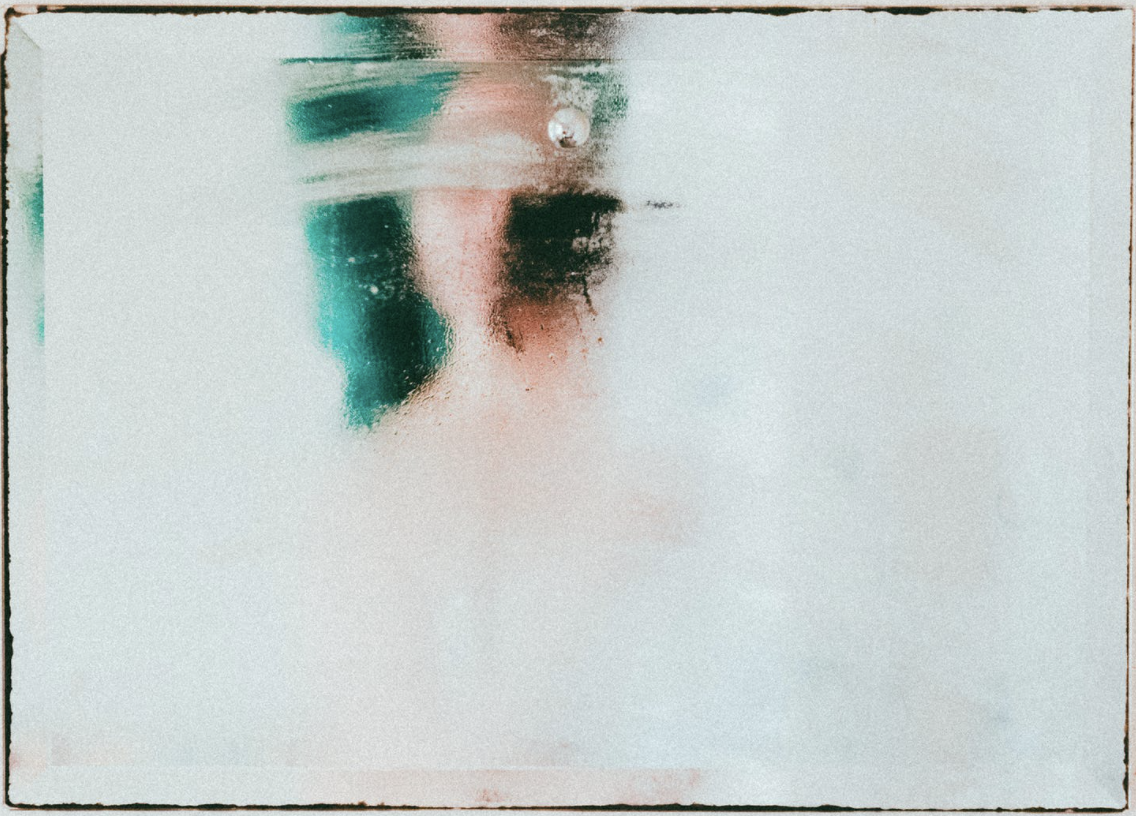I stumbled upon Marie’s art at this years PARALLEL Vienna and was immediately drawn to it. Her work is very honest and very powerful through that, but also vulnerable at the same time. It makes you think, challenges your way of seeing things and touches you straight to the heart.
For the following I asked Marie if she wants to do an interview with me:
Luna Maluna Gri: Tell me a bit about yourself and your work.
Marie – Therese Blecha: I’m Marie – Therese, I’m 23 and I live in Vienna. My driving teacher says I’m too carefree for the outside world, which probably explains why I don’t have a driving license yet, but lightheartedness, that will always be a part of me. My art on the other hand represents more of what I don’t show to the outside world, because I process more the subconscious and express visually what I hold back verbally.
LMG: How and why did you start creating art?
MTB: I would say, because even as a child I was never that good at expressing verbally what was going on inside of me so I quickly found a way to translate my thoughts into visual language by drawing and painting, I was pretty young, and I was able to depict things on paper that were difficult to put into words and somehow it also had something therapeutic to it. So over the time it developed from an initial impulse to an inner urge to continue in this way. And my work now consists of fine art and conceptual work, so it’s more like either drawings and paintings or sometimes also interactive performances or conceptual work installations and I don’t like to limit myself to just one medium because for me it depends more on the topic than the medium.
LMG: What role does creating art play for you?
MTB: For me, it’s the most honest and easiest way to process what’s going on inside me. Every person has their own way of doing it, for me it’s in the visual language.
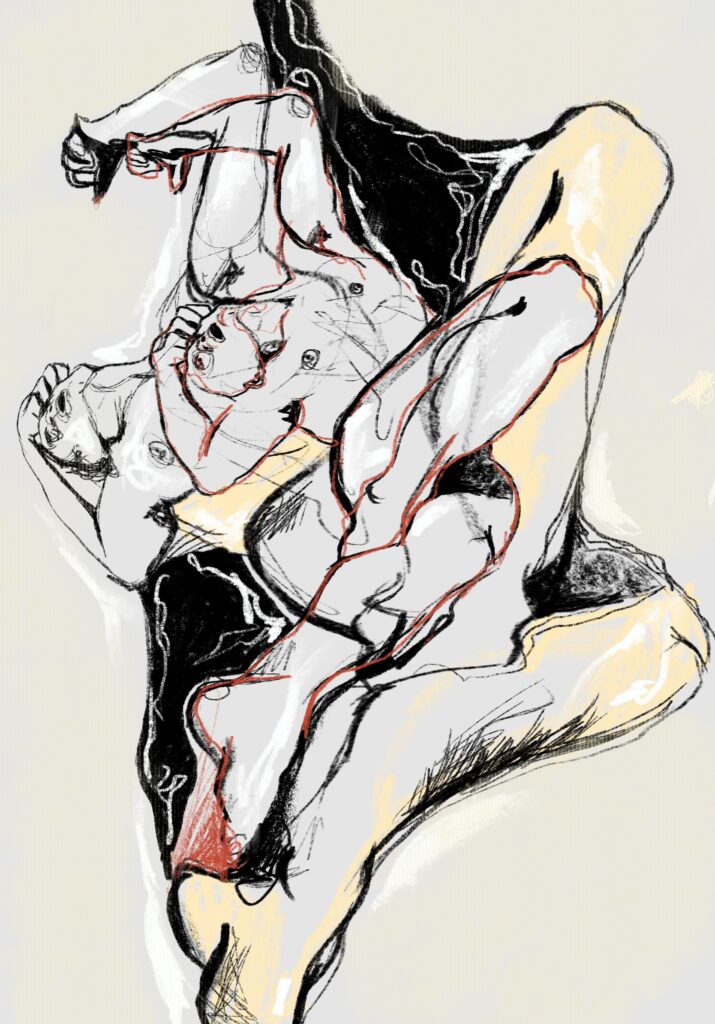
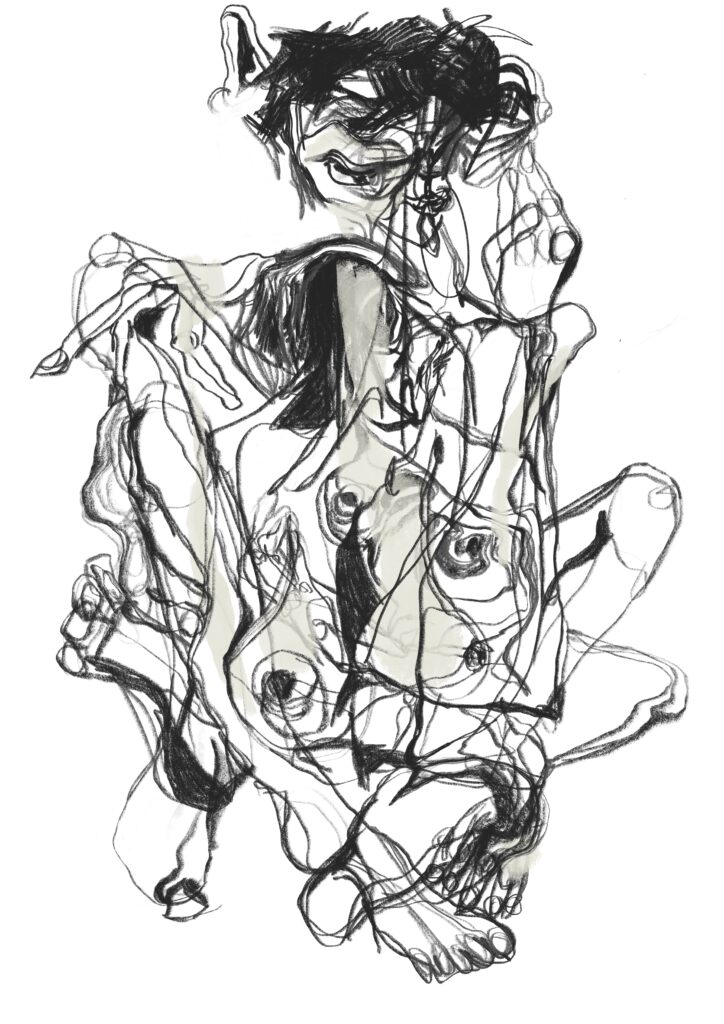
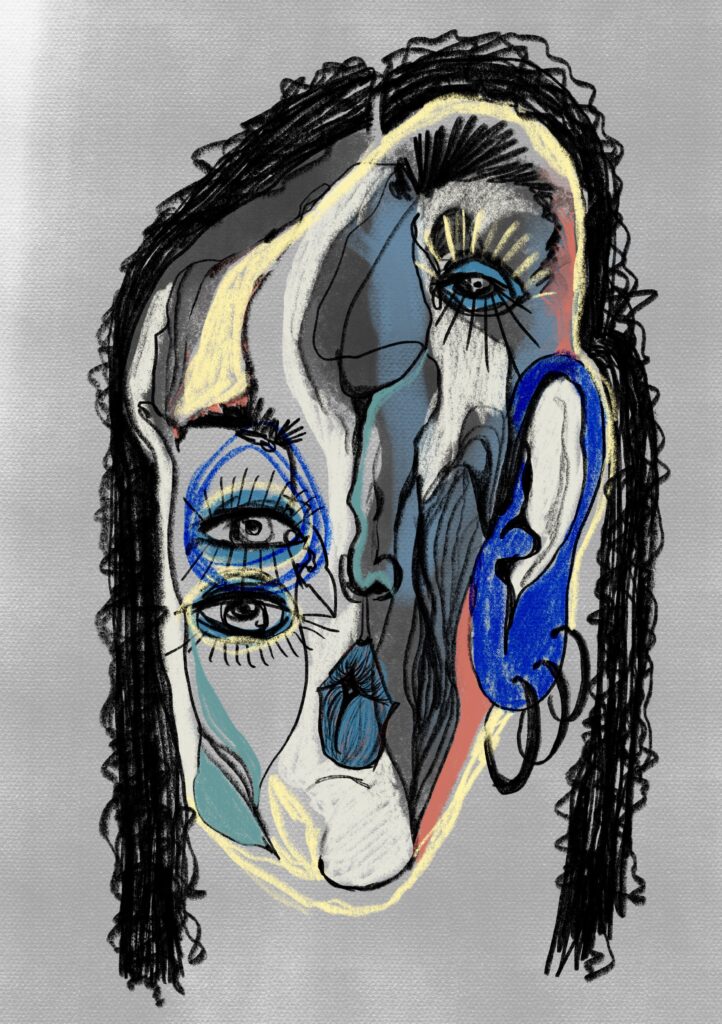
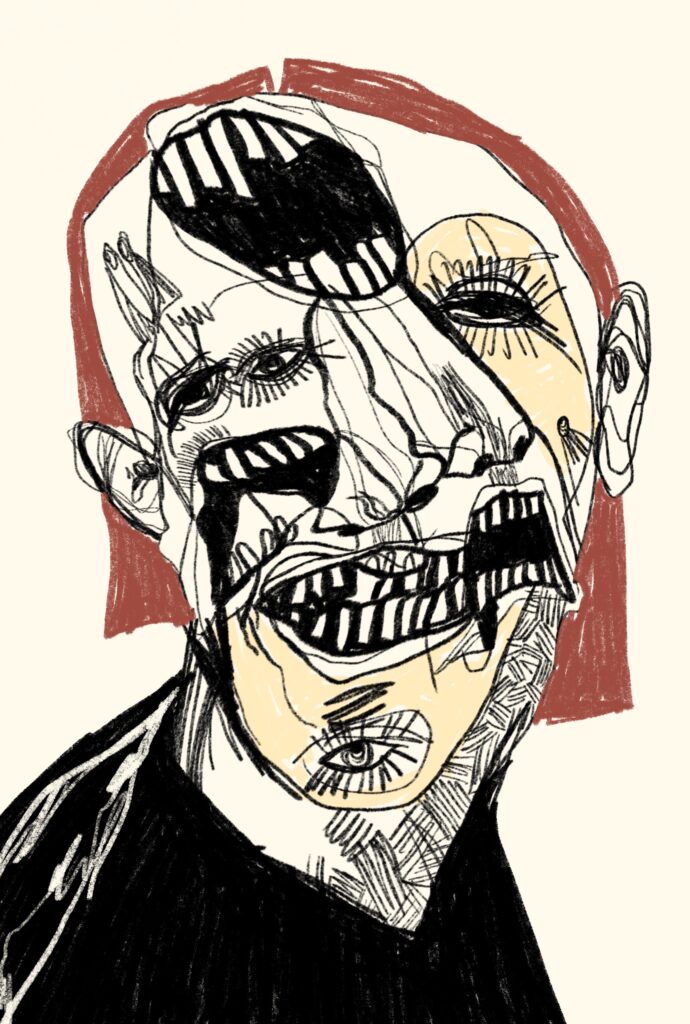
LMG: What does your creating process look like?
MTB: There is two, it’s the impulsive or the deliberate way. The impulsive process is, I let my hand guide me and then after I confront myself with the topic. So it just happens impulsively, I don’t think much during. The deliberate process starts with an idea, I deal with a topic in advance, do research etc. and then I carefully take everything apart in the process until I put it all back together again. This is usually how my conceptual works happen.
LMG: What inspires you?
MTB: I like being around people, so I would say this inspires me the most. It can also be short encounters which leave some sort of a resonance or something, or interpersonal interactions that I observe pick up on later. Talking to people, being somewhere is always very inspiring to me.
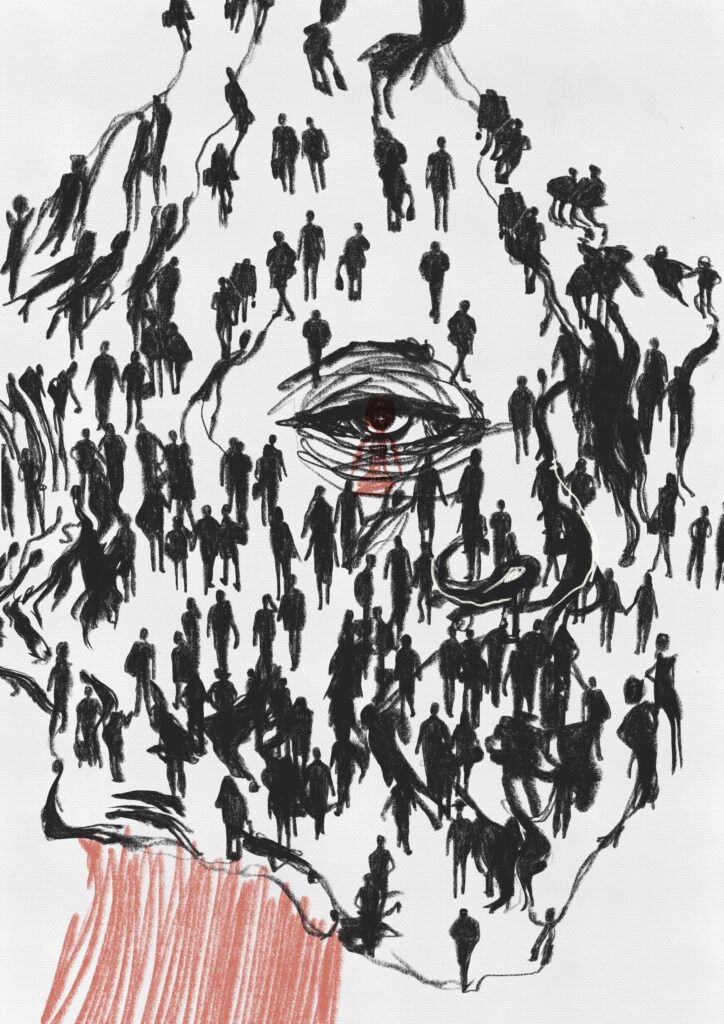
LMG: What is your experience with the art world?
MTB: I’m not the biggest fan of the art world, or art bubble I would say. I mean, there are many, many events and exhibitions in Vienna that I always enjoy visiting. You can network there, you can get to know new impressions, etc. but this elitism of the art world bothers me, so I wouldn’t necessarily want to be associated exclusively with it. I like to make my art, I like to bring it to the outside world, I like to go to exhibitions and everything but, for example, I don’t care if somebody studies at a famous art university or something, that doesn’t matter and it shouldn’t be as important as it is.
LMG: Is there something you want to change about the art world? If yes, what and why?
MTB: It’s so exclusive, I don’t like that. I also find it too artificial that many people want to appear elitist. I’d like it if the art world would also be accessible to people who are not in the art scene but are interested. This elbow society has no place there.
LMG: Yeah, I often feel like people are a bit deterred to really get in contact, which is sad because this exchange would be so enriching.
MTB: Yes definitely, I agree.
LMG: What do you think is / are the role / -s of art and art and artists in our society?
MTB: Artists are witnesses of their time. And every artist communicates differently. That’s what makes it so diverse and also unique. Every artist has their own way of expressing themselves, their own experiences, observations that they share. And what stays with the observer, what makes them think, makes them feel emotions, inspires them, is unique and irreplaceable.
LMG: What artist /-s would you like to meet (alive or dead) and if you had one question what would you ask them?
MTB: I wouldn’t have a specific question in mind but I would love to spend a day with Sophie Calle and stalk other people (laughs). That would be funny! I guess that’s what comes to my mind.
LMG: Is there something you want to achieve in your art life? Dreams? Future plans? Or projects you would like to do?
MTB: Having fun at work is extremely important to me and I really want to keep it that way. In the future I also would like to have a co-working space because, I love working alone on my art and switching off, being by myself, kind of like in a therapeutic way but sometimes an exchange is also good. Kind of like musicians, the are always jamming together and I think it would be cool to find or create something like that in an art context. To have a place where people from all kind of artistic disciplines meet and work there together. I think that would be my plan for the future, to do something like this, but that’s in the future so we’ll see.
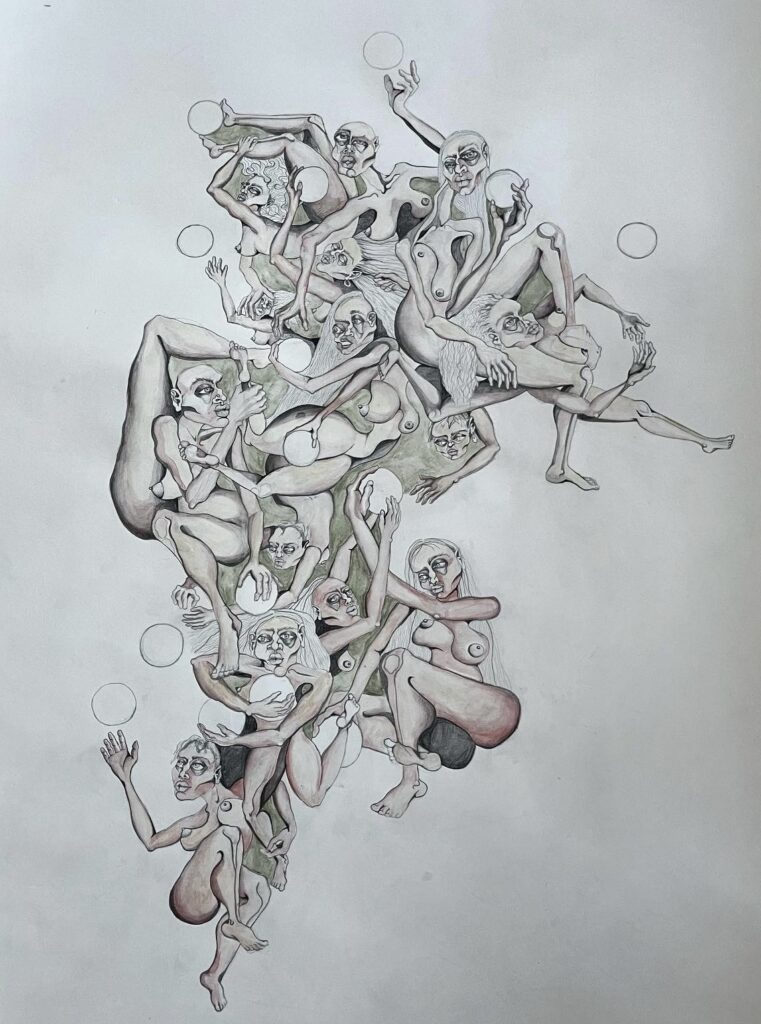
LMG: Do you think there is something you can bring to this world through your work as an artist which you couldn’t in any other field of work?
MTB: In my opinion you make art first and foremost for yourself. If you do it for others I feel like it’s not good. You can see it like a diary entry because you don’t care wether your own personal diary entry is well or badly received. A diary entry for example is my personal processing of things, my worries, my needs, my observations which in this case are shared with the world and when you do that you make it accessible to the audience. To the audience that can resonate with it in some way. Either it triggers an emotion or provokes discussion or whatever, and that is what makes it so unique and real because I couldn’t find this in another field or in any other work. For example I’m also a graphic designer and I love that but still design in general serves as a function, it has to have like a purpose, it has to appeal to the outside, it has to functionality to itself and art doesn’t. Art is not about pleasing others in my opinion, it’s more about sharing my own authentic voice and this is what I love about it so much.

Copyright Portraits: © Jonas Subotic
All other photos and artworks: © Marie – Therese Blecha
Instagram: https://www.instagram.com/mariexxtherese/




